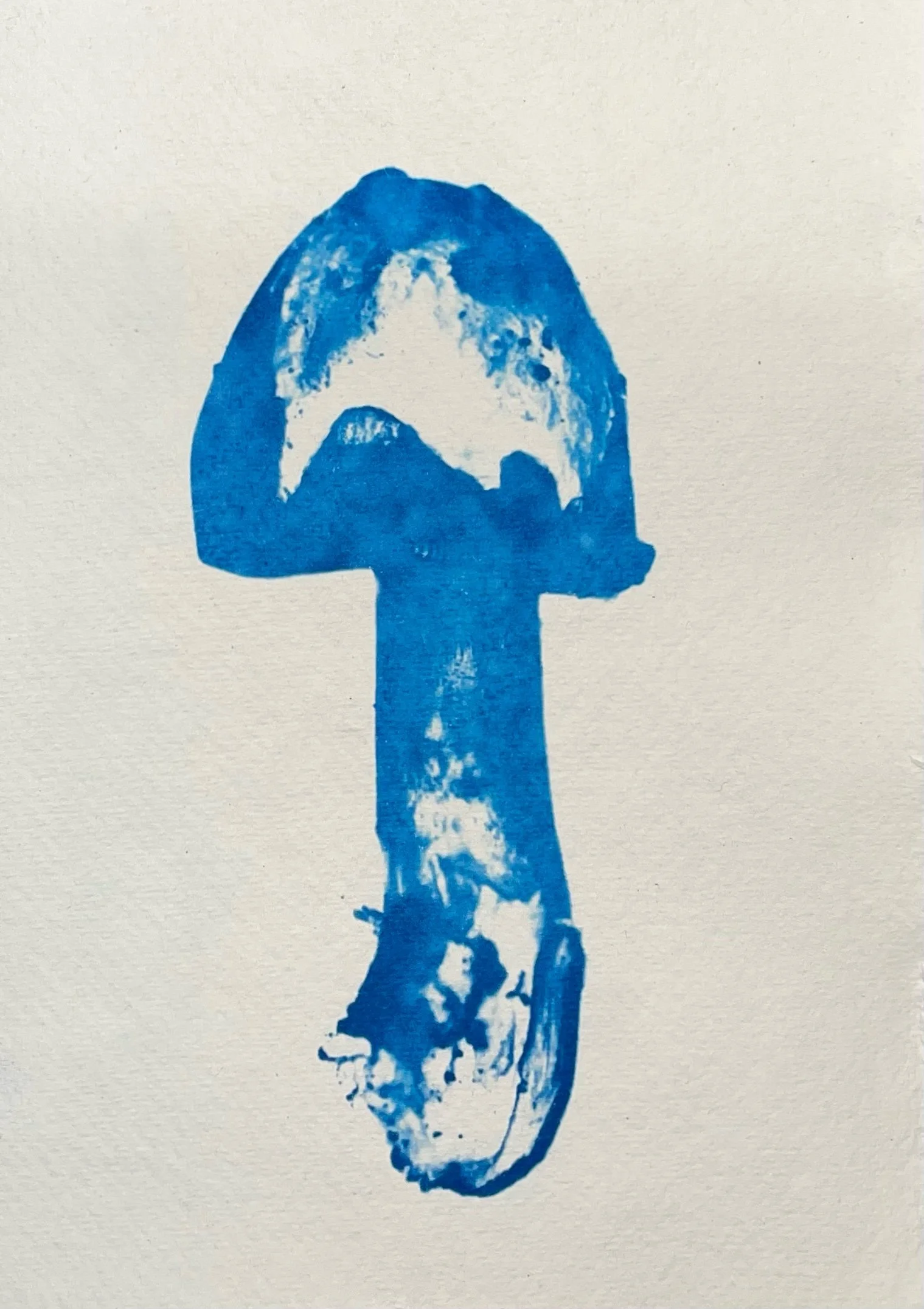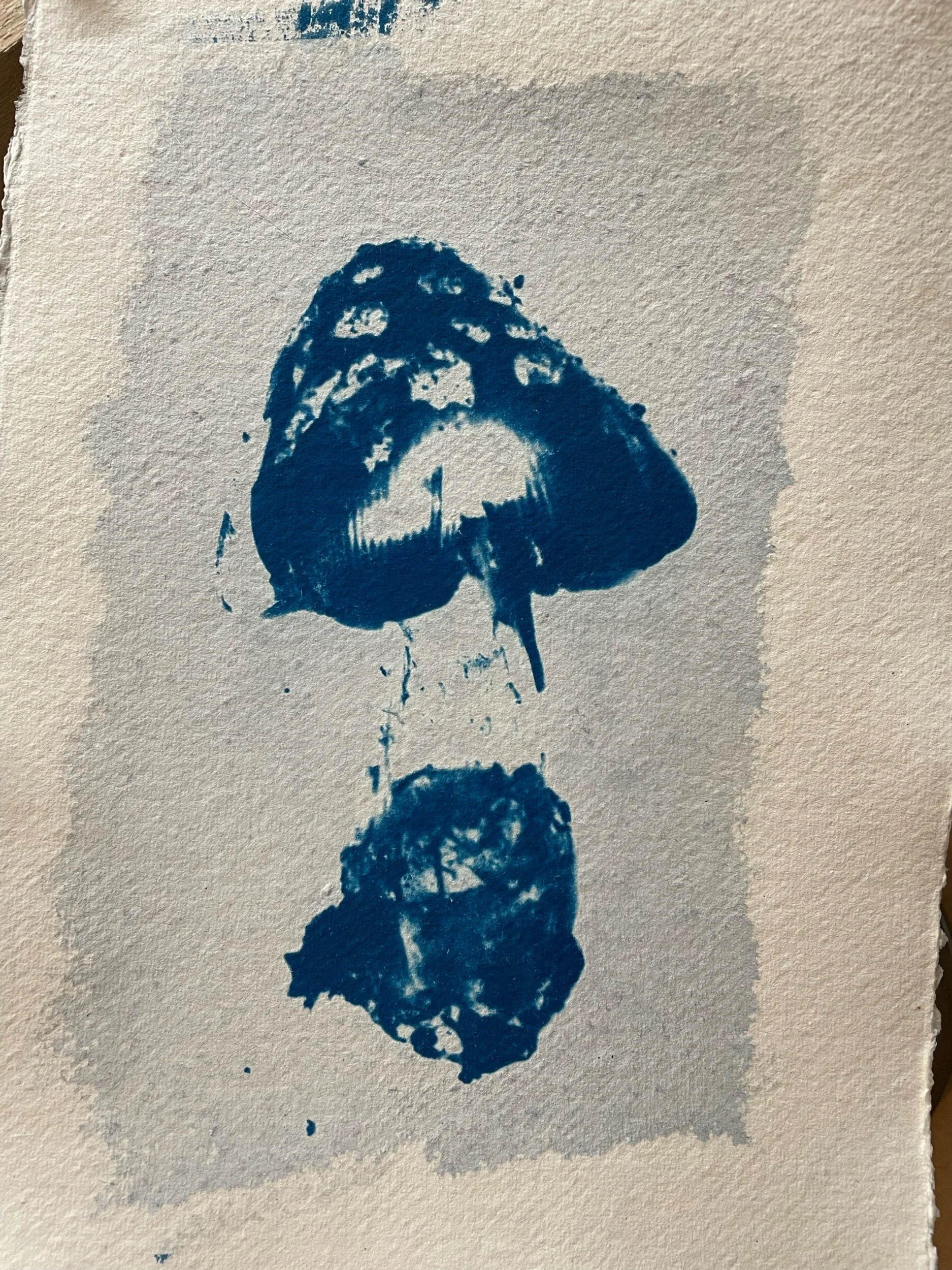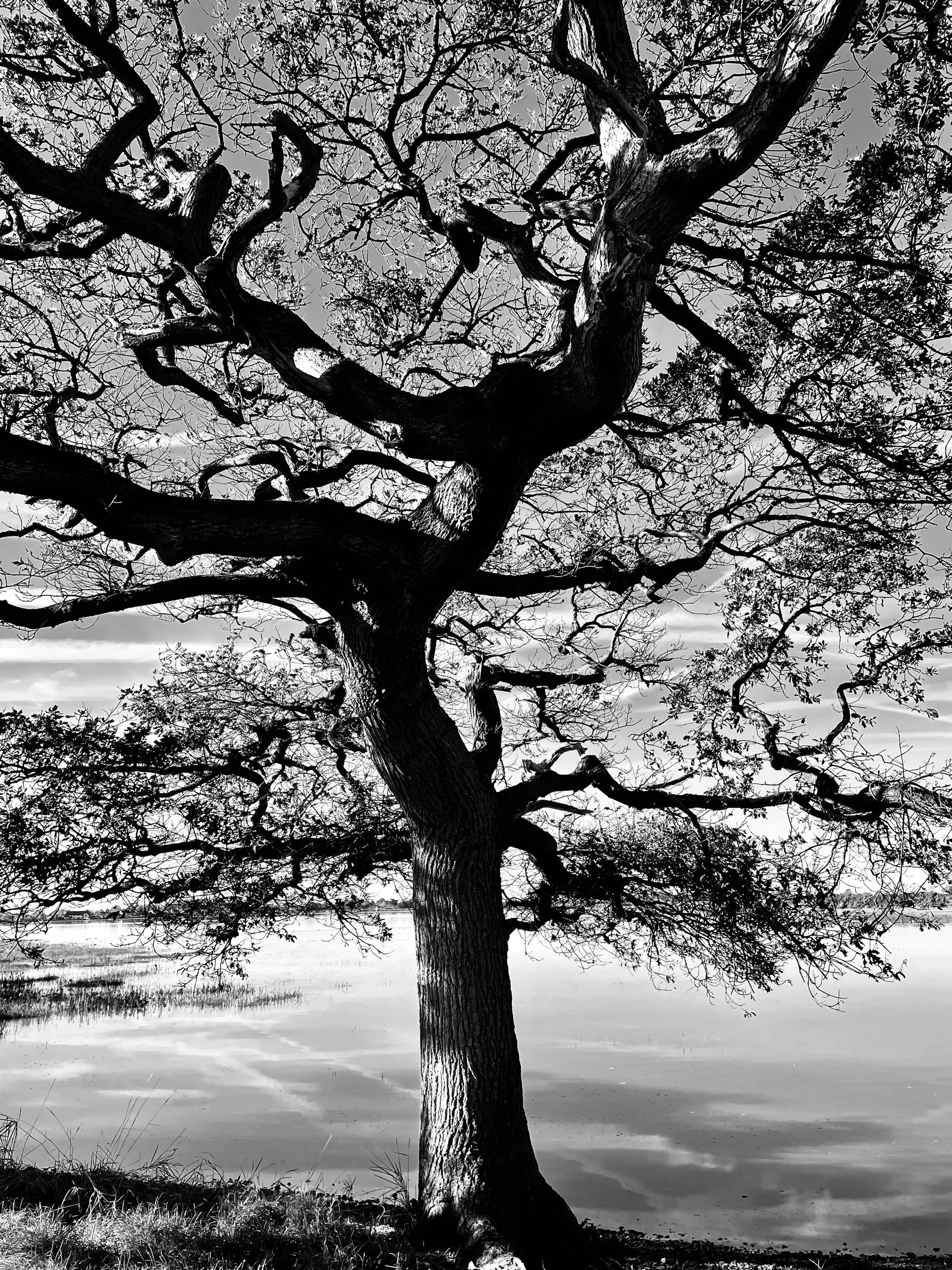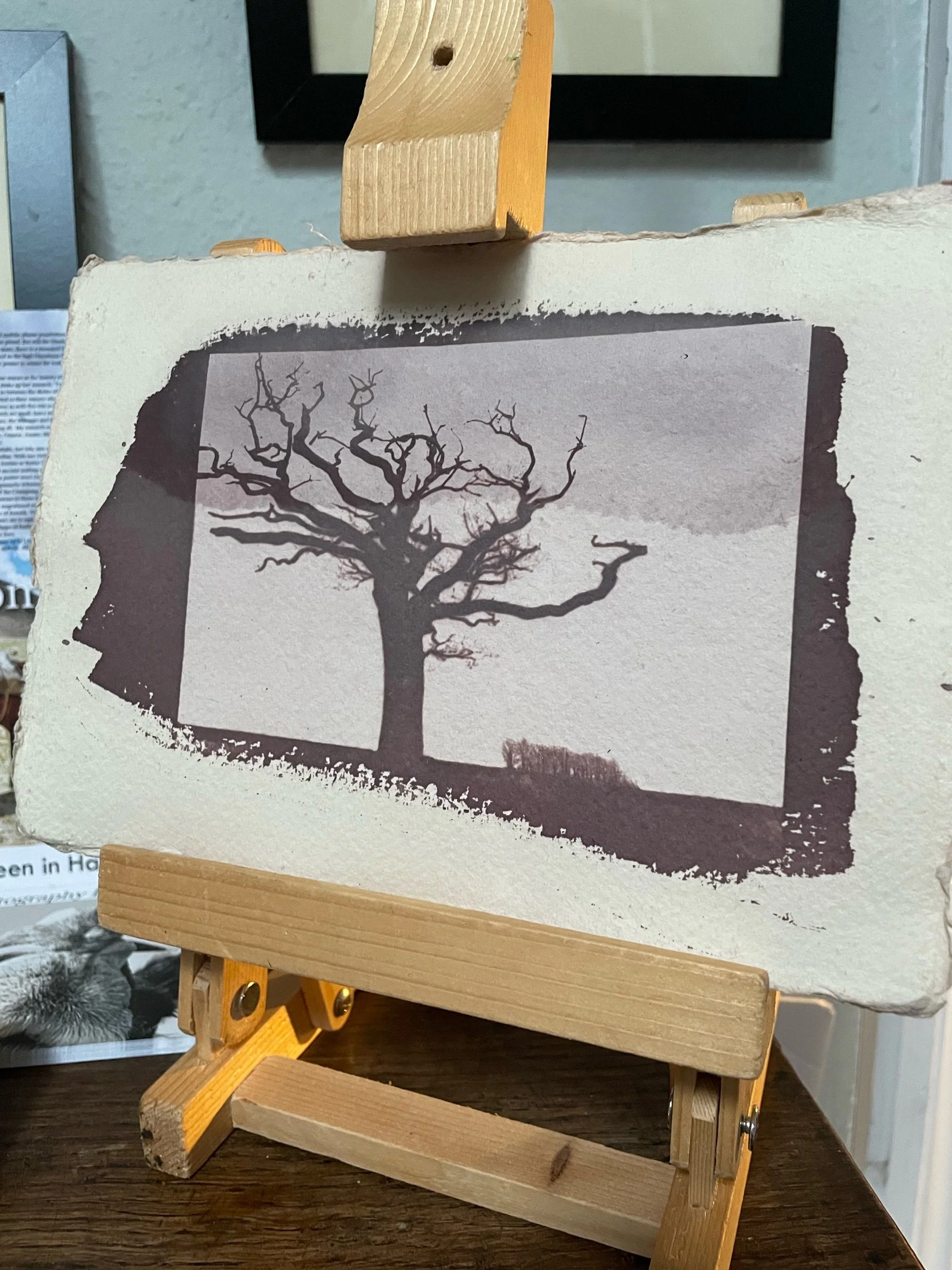This is something I’ve been thinking about for the past two years since I’ve had my own studio.
Research into other artists has introduced me to the interesting and thoughtful work of Almundeno Romero who wrote the following:
“…The Pigment Change wonders whether artwork production contributes towards a different understanding of photography, photographic processes occurring in nature, and our relationship to nature, or if it simply fulfils artistic ego and needs. Researching a sustainable physicality of photography helps artists keep practising, but does it facilitate others sustainable futures?
… Can photography be a tool for reassessing our relationship to nature and explore non-anthropocentric perspectives?”
And this led me to Stephan Mancuso At the International Laboratory of Plant Neurobiology who had this to say:
“We inaugurated …’Nous les Arbres’ at the Fondation Cartier. With Dutch artist Thijs Biersteker we produced this installation in which we collect data from two trees in the foundation’s gardens and we transform the information into moving images. It’s fascinating because it conveys how much plants are capable of perceiving in their surroundings.”
From an article in the new Journal of Landscape Architecture (1, 15, 2020) I picked up the thinking behind the exhibition:
[https://www.tandfonline.com/toc/rjla20/current]
“The Paris Exhibition Nous Les Arbres (We, the trees) has four focal points. Biological characteristics, social importance, aesthetics and structure, devastation by human interventiontion and environmental catastrophies. The exhibition illustrates a range of humanistic, social and scientific research on trees.”
Out of which my take-aways were: bio-resin, (always an interest), plant perceptions, ecologically conscious photography, important trees within our eco communities and urban areas, and a desire to further explore the narrative to bind them.
The question of whether photography can be a tool for reassessing our relationship to nature and used to explore non-anthropocentric perspectives is one that I’ve been processing. I’ll look in more detail at the wider questions of accumulation and disposal and the role of an artist in an environmental crisis in other blogs.
My studio practice and research over the last two years has led me down a botanical path. The alternative analogue methodology of Cyanotype photography allows the photograph to have an evolution of tone, a dynamic life, through paper choice and bathing in botanically-led dye baths. The question of fugitive colour is at the front of my mind most days. In turn, there are a rash of question connected to process. Will the dye be lightfast and permanent, or will it shift in tone and potentially fade over time? Are fugitive images their own trope? Should we embrace these fadings?
Are dynamic processes a better part of this post-Covid point in time, where we question whether we should even think about producing consumerist commercial art?. Is our creative footprint light enough on the earth? Is using resources for fine art photography a sustainable route?
Should we only look at sensitive images locked in moon albums or do we embrace digital technology and capture images of their fleeting change?
The photograph on Khadi paper, a plant-based, largely cellulose substrate with its own electrical charge, responds to the botanical dye baths in varying ways. Using locally foraged materials such as wild clematis and acorn husks, my personal relationship to the image and the plants I use has been amplified by the process.
I’m starting to examine the non-anthropogenic perspectives from the viewpoint of the plant or fungus. Am I making connections through my images that exist (or not) in nature? As Romero writes: “…photographic processes occurring beyond human perception…” A mushroom-tea bath for an image of a beech tree. The mushroom picked from the foot of the beech tree, already performing mycological magic. Rosehip stain on wild clematis images, where they tangled in an ancient hedgeline.
Some of these botanical connections exist already in nature. Others, less. Perhaps my studio work is enabling communication between kingdoms at the molecular level, via the stained images? I have no answers. Are these beyond human perception? Mushrooms can be viewed under UV and operate on different light spectrums. Magpies give off signals through their tail feathers only other Corvids can read. There is much to learn.
As yet unbathed mushroom, found on a dog walk locally. Waiting for a dye bath.
I know that I am focused on plants, and particularly trees, and that finding like-minded thinkers such as Stephan Mancuso pings the reassuring lifeline of community. My interests align. It’s taking some time to find its way through my dimroom but the train of thought and intention is there. My focus has been fleshed out by his words on the exhibition focused on trees:
“Biological characteristics, social importance, aesthetics and structure, devastation by human interventiontion and environmental catastrophies.”
These are my tree foci.
Trees have been much on my mind today. I hear on the radio that there is good news. Brazil says it has signed up to protect the green capital of their forests at the current 2021 Climate Change Convention in Glasgow. The trees, possibly, might just have a chance. I am still dancing around the standing stones of eco-community ideas. I’m hoping my tree images reflect their biological characteristics, their social importance to me and the eco-communities in which we exist.
This could all be bollox and just be about me being a tree hugger. Which I freely admit to. I have many trees I greet.
My path through this has focused on taking images of the botanical material then tone-bathing the image in a solution made of the material itself. Mushrooms images toned in mushroom steep. Old Man’s beard toned in ..old man’s beard. The spinning of the wheel. A certain circularity to the process. I’m not sure if there’s any sense to any of this but it’s forcing me to get slightly away from a single digital shot.
A digital image now has an extended, physical life as a negative and then hanging on my little washing line as a print, drying, while I watch the colours sadden or lighten. I use small volumes of water for I have no tap (Martin, you’re still stifling creativity) and the Cyanotype chemicals are all found in nature. My electric lights are off 85% of the time. My work has a sustainable physicality, which does help me keep practising. Romero asks “…but does it facilitate others sustainable futures? “ My response to this is that talking about the significance of the plant and mycological communities, and creating work around the subject, is part of keeping the dialogue fresh. A sustainable future is a very hard meme to unpick. I’d like my work on the theme to be a (slightly romantic) engagement with the communities we share with the natural world. Images, perhaps, that remind us how little we know and how much we have to learn.
If artists are to create they have to fund the artistic space, and buy materials.
You can buy my Cyanotypes at A4 (£95) and A5 (£45) from me for Christmas presents, or gift yourself a workshop (£195) to make your own botanically dyed photographs.
Unique. Imagined. Ecological.




